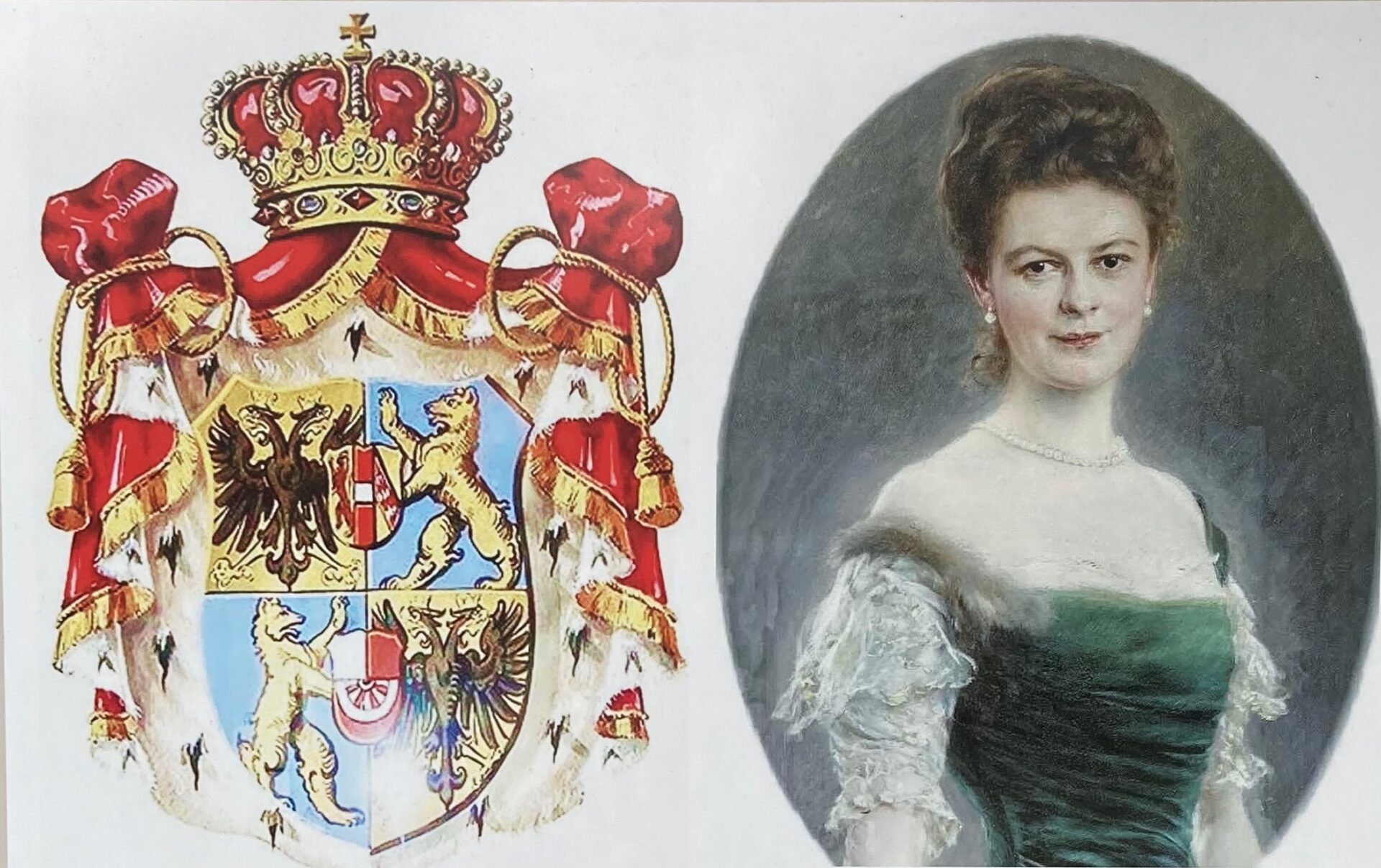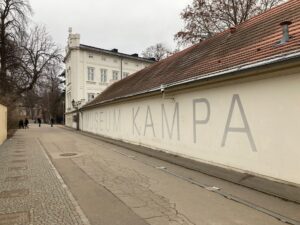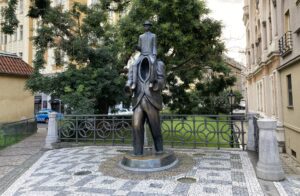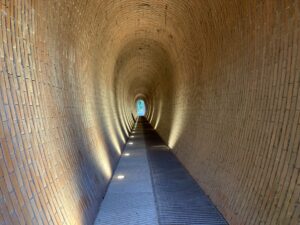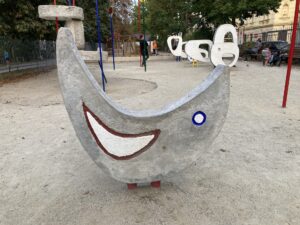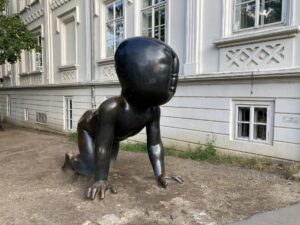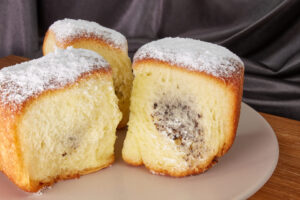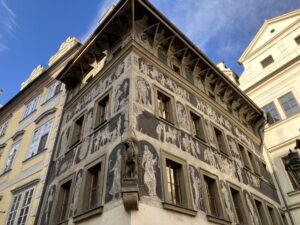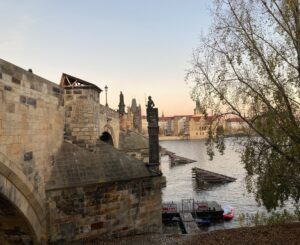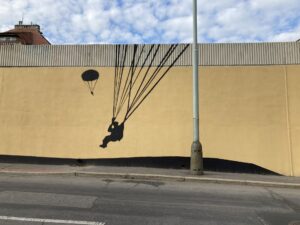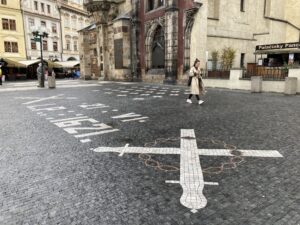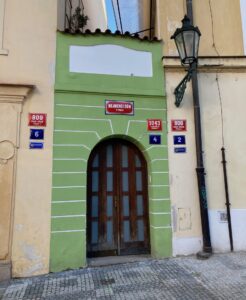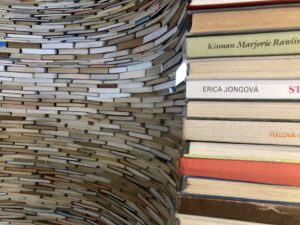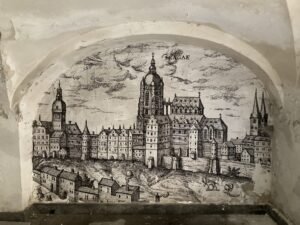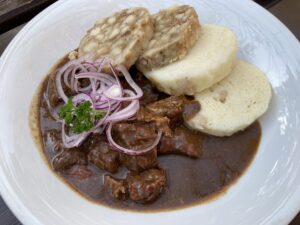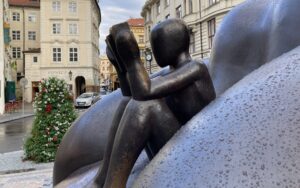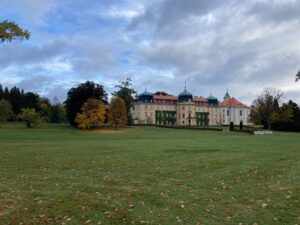The Prague Castle complex is the largest in the world; it covers over 17 acres. Therefore, when you take tram (22 or 23) up to Prague Castle, you can get off at four different stations, depending on which part of it you want to visit.
The Royal Summer Palace (Královský letohrádek) stop is right opposite the entrance to the Royal Garden and Queen Anne’s Summer Palace (you can read the story of the great love of her marriage here). The shortest way to the Second and Third Castle Courtyards and thus to St. Vitus Cathedral is from the Prague Castle stop. If you want to start your visit to the Castle in Nový Svět (The New World), the quietest and most fairytale-like part of Prague, where impoverished people used to live, which is why many houses have the word “gold” in their names, the fastest way to get there is from the Brusnice stop. And there is also a route from the Pohořelec stop, which is the shortest route to get to Loreta.
When the tram arrives at the Královský letohrádek stop, on the right you can see the dominant structure of the Sand Gate (“Písecká brána”), which was part of Prague’s Baroque fortifications, the Marian Walls. (Today, there is a pleasant café inside the gate, and cultural events are also held there.)
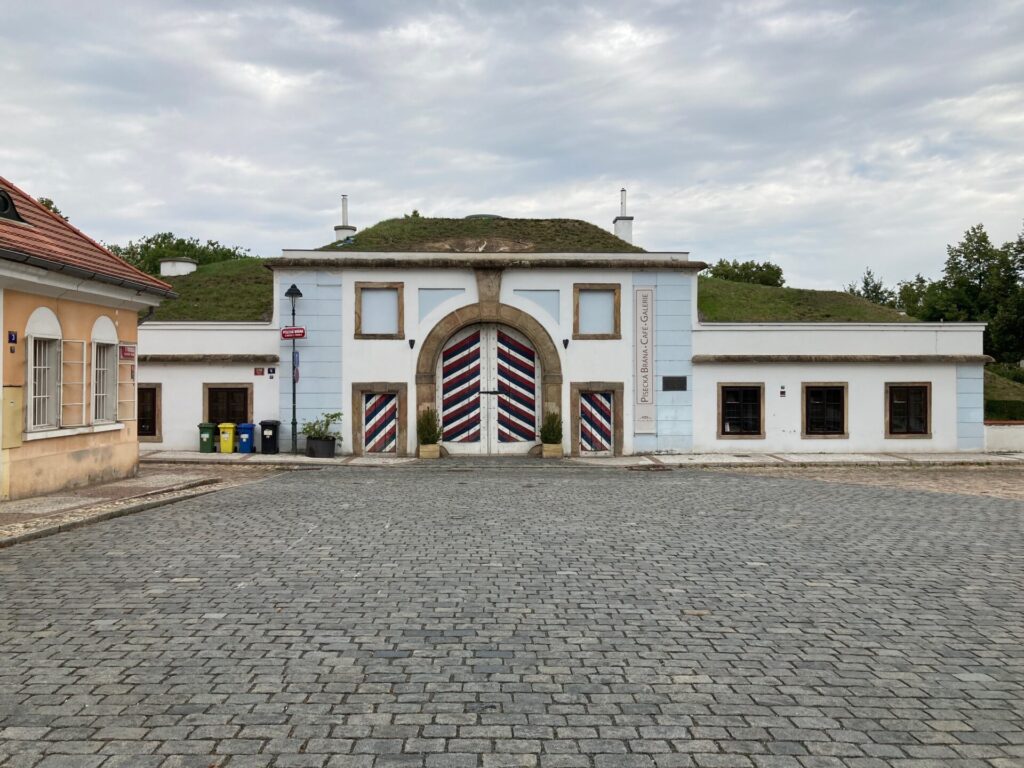
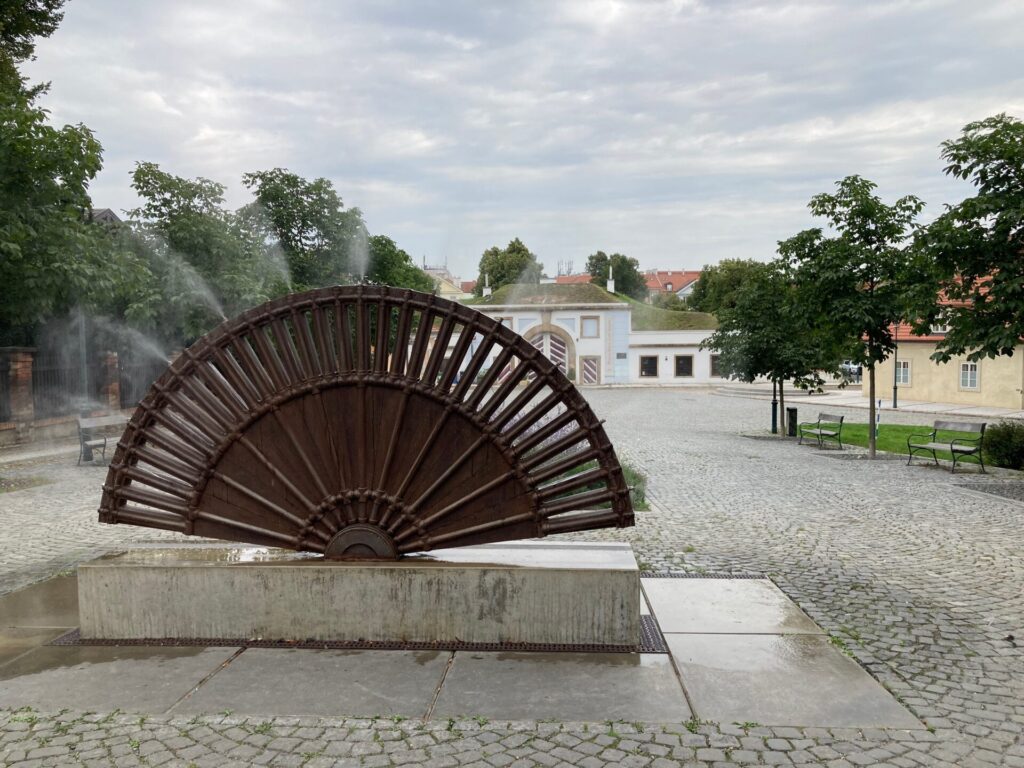
“Písecká” was originally the name of the gate that was part of the medieval fortifications of the Lesser Town. It stood where the Malostranská metro station garden and the Wallenstein Riding School entrance are today. The gate was demolished in 1623; it went down along with one of the Lesser Town palaces, 23 other houses, a lime kiln, a brickyard, and the three existing large gardens were also incorporated into the project. This demolition made way for the grandiose plan of one of the time’s wealthiest and most powerful noblemen, politicians, and military leaders, Albrecht von Wallenstein. The plan included the construction of the Wallenstein Palace, the Wallenstein Riding School, and the Wallenstein Garden (the palace is now the seat of the Senate, the upper chamber of the Czech Parliament, and the riding school is one of the buildings of the National Gallery).
The Písek Gate was named after the now-defunct settlement of Písek (“sand”), which had been on an island near today’s Malostranská metro station. The settlement had existed there since the 10th century. Still, in the mid-13th century, the settlement and its island disappeared when the Vltava River rose by 3-4 meters due to the construction of weirs.
In the area within sight of the Sand Gate, there has been a fountain called Sophie Chotek’s Fan since 2019, designed by sculptor Martina Hozová in collaboration with the author of the fountain’s technical design, Jan Paclík. The fountain, or rather the “fog stop”, stands in honor of Countess Sophie Chotek, a member of a prominent noble family.
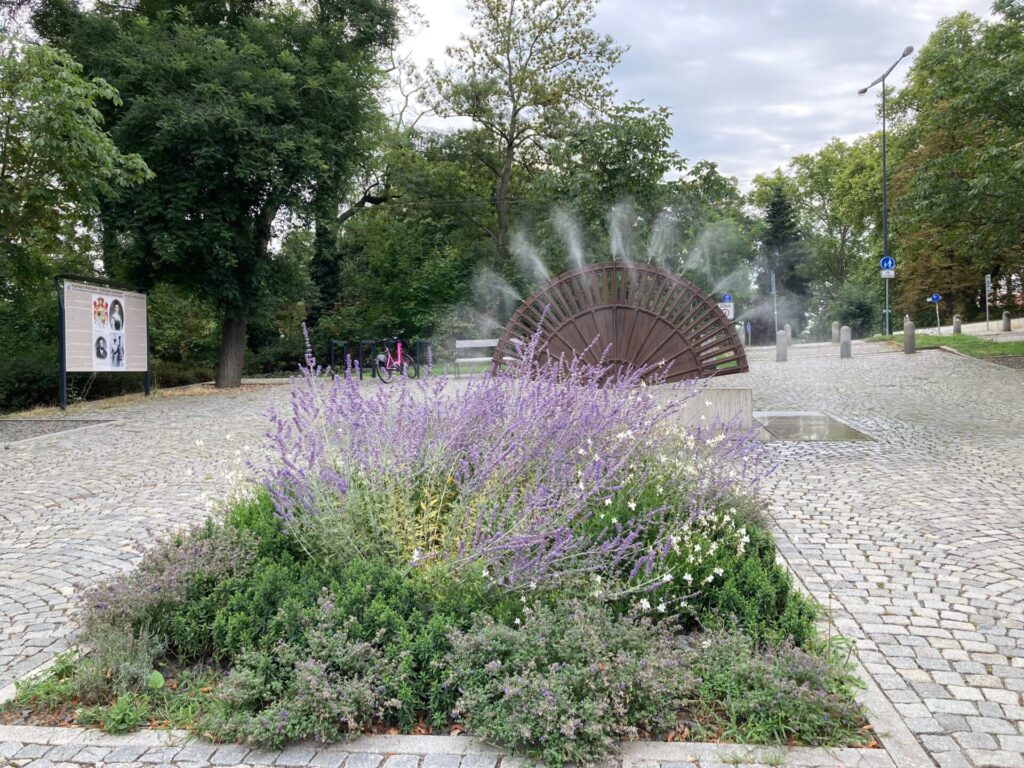
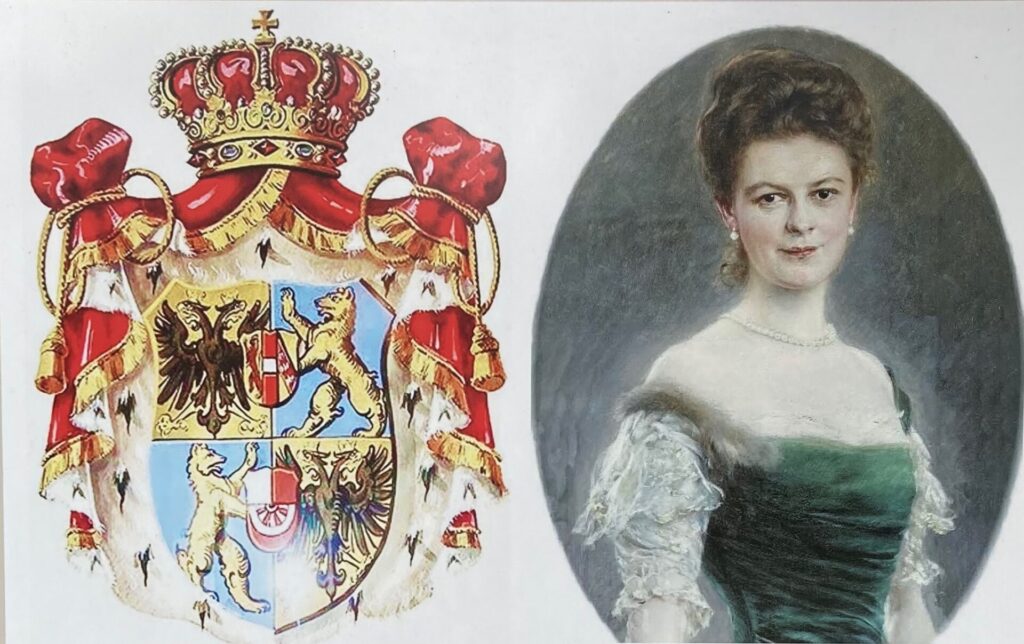
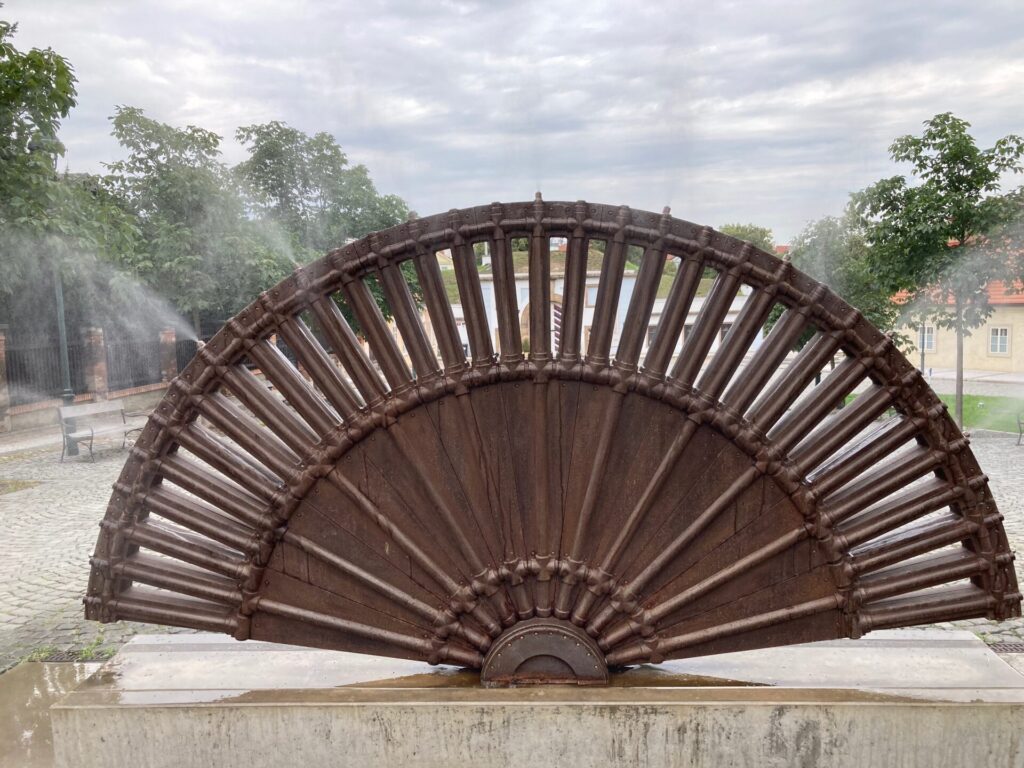
Sophie Chotek lived a happy marriage with the successor to the throne of the Austro-Hungarian monarchy, Ferdinand d’Este. On June 28, 1914, they were both assassinated in Sarajevo, which triggered World War I. Ferdinand’s last words were to his wife: “Sophie, Sophie, don’t die! Stay alive for our children!” The couple died just a few minutes apart. At their joint funeral in Vienna, two objects were placed on Sophie’s coffin. Gloves and a fan…
The fountain is located in a place associated with Sophie’s grandfather, Karel Chotek, who contributed significantly to the development of Prague. Across the street are Chotek Gardens, and below them is the meander of Chotek Street, which Karel Chotek had carved into the rock so that horse-drawn carriages could easily get from Klárov up to Letná and the Sand Gate. Until then, only a steep sunken way led up, which was called The Mouse Hole (Myší díra); today it is called Under the Bruska (Pod Bruskou), as “Bruska” was actually another name for the Sand Gate. Interestingly, Albrecht von Wallenstein was the one who had the sunken way cut into the slope.
The fountain is made of cast iron and ordinary plumbing pipes. It is intended to resemble the Art Nouveau period, but also the architecture of the Industrial Revolution. The ribs from the water pipes are reminiscent of the shape of a fan. The bronze patina symbolizes the faded glory of the Habsburg dynasty, whose rule and administration of the Czech lands lasted for almost 400 years. The first Habsburg on the Czech throne was Ferdinand I in 1526 (he was the one who had Queen Anne’s Summer Palace built for his wife across the street from the “fan”). The last was Charles I, who was forced into exile after the establishment of the republic in 1918. He did not abdicate the throne at that time, but issued a declaration in which he relieved the government of its duties and renounced participation in the management of the state.
There is no such thing as “what ifs” in history, but it would certainly be very interesting to know what would have happened if Sophie Chotek and her husband Ferdinand d’Este had not been shot in Sarajevo…

